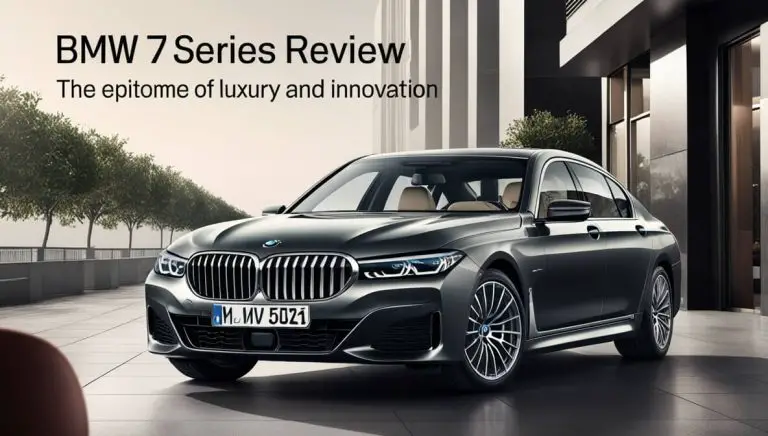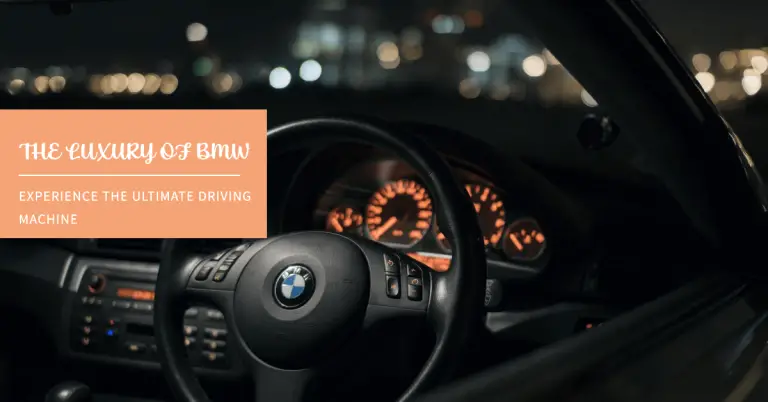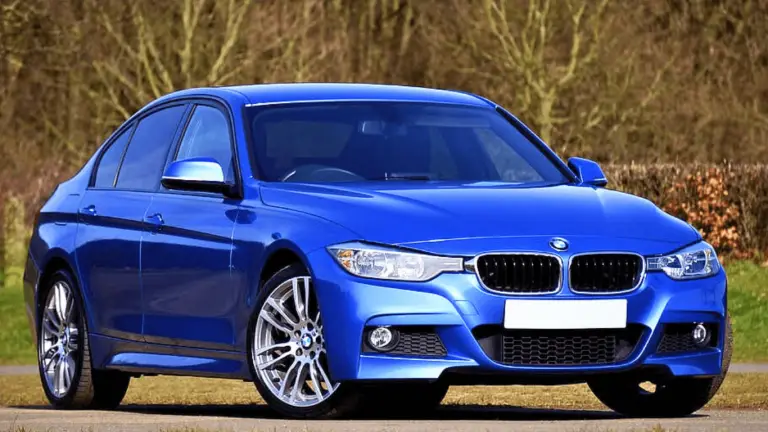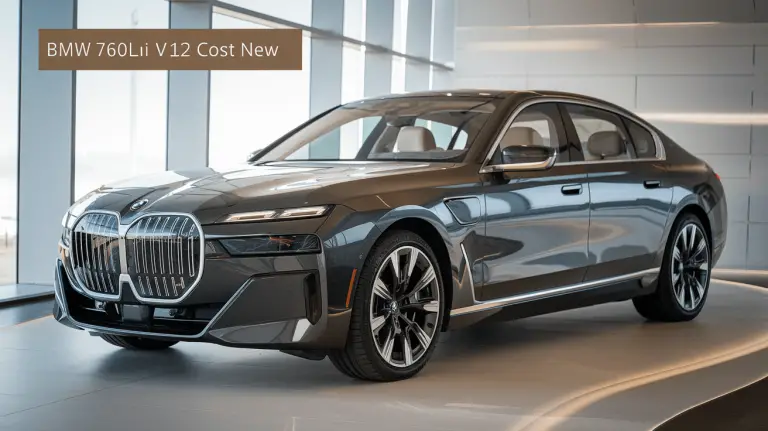Did BMW Ever Make Planes? A History of the Automaker’s Aircraft Engines
BMW is known globally today for its luxury vehicles and performance sedans. But did one of the world’s premier automotive brands actually start out building aircraft engines?
In the early 20th century, BMW originated as an aircraft manufacturer before events led them to pivot toward cars. However, they temporarily returned to making airplane powerplants during World War II at the Nazi government’s behest.
So did BMW ever truly make complete planes or just aircraft engines? Let’s delve into BMW’s little known aviation history.
BMW Takes Flight with Fighter Plane Engines in WWI
Long before producing legendary luxury automobiles like the BMW 3 and 5 Series, the now iconic German company was focused on the skies.
BMW, which stands for “Bavarian Motor Works,” traces its roots to 1916 as an aircraft engine factory to supply the Imperial German Air Service. They were producing around 100 airplane engines each month during World War I when demand peaked.
The company’s first major successful aviation product was the BMW IIIa engine. BMW’s high-altitude carburetor gave it better performance over rival engines as altitude increased. It was truly state-of-the-art technology at the time.
The innovative BMW IIIa motor soon powered many German fighter planes leading to air superiority over the Allies. Most famously, it enabled the lethal success of the infamous Red Baron flying his Fokker triplane over the skies of France.
So in World War I, BMW made a name for itself keeping German warplanes flying with cutting-edge aviation technology. Their engines directly contributed to military dominance in the air.
Treaty of Versailles Forces BMW to Shift Away from Aircraft
However, Germany’s defeat in 1918 led to severe restrictions on military technology production in the harsh Treaty of Versailles. As part of limiting the defeated country’s aviational capacities, BMW was banned from manufacturing aircraft engines for five years.
This prohibition forced BMW to pivot and apply its engineering talent to other areas – two wheels and four wheels vehicles. Throughout the 1920s, the company focused on motorcycles as well as some early automobile models.
While BMW continued innovating on world-class engines during this time, it was for motorbikes and passenger cars instead of planes. By 1929, BMW was making its first series-produced automobile engine.
Still, the influence of BMW’s roots building aviation powerplants continued even on those early BMW cars and bikes. The famous BMW badge shape itself was inspired by the movement of a spinning propeller!
Return to Aircraft Engines for Nazi Germany’s Luftwaffe
The rise of the Nazis in the 1930s led BMW back into military aviation though – this time for an even deadlier war.
In Nazi Germany’s massive rearmament program, BMW began developing advanced combat aircraft engines again. Introduced in 1939, the BMW 801 was a 14-cylinder radial piston engine capable of over 1,700 horsepower for the Luftwaffe.
The powerful BMW 801 engine went on to be installed on key German frontline planes like:
- Messerschmitt Bf 109 fighter
- Junkers Ju 88 bomber
- Focke-Wulf Fw 190 attack aircraft
- And more late-war jet and rocket aircraft designs
During World War II, BMW produced over 61,000 examples of the 801 aviation engine, making it Germany’s most-produced aircraft engine design of the entire conflict.
So despite a long gap between aviation powerplant products, BMW still made a vital contribution to the Nazi air force with iconicLuftwaffe airframes relying on its powerful air-cooled radial motors.
Allies Prevent Aircraft Engine Production in Postwar Germany Again
Yet again though, BMW saw its aircraft manufacturing capabilities severely limited in the wake of Germany’s destruction in WWII. Its plants faced massive bomb damage by Allied raids during the war.
And similar to post-WWI, the Allied occupying powers prohibited German aviation engineering capacities after Nazi Germany’s fall. Facilities and personnel working on military aircraft engines were especially targeted.
So in BMW’s sector of Bavaria, any remaining aircraft engine production infrastructure was ordered demolished by the victorious Allies by 1947.
BMW had to rebuild itself again around its automotive division after WWII since aviation powerplant manufacturing was essentially eliminated. They would concentrate on introducing innovative new economy car designs in postwar West Germany.
Models like the practical Isetta microcar and sporty little BMW 700 economy car helped restart the company during Germany’s economic reconstruction period through the 1950s.
Joint Ventures in Aircraft Engines But No Longer Complete Manufacturing
In later decades, BMW would have collaborations with other aviation companies but not return to fully building airplane engines themselves again.
For instance, in the 1990s and 2000s, BMW partnered with Rolls-Royce to produce the BR700 family of modern turbofan aircraft engines. Based on BMW’s automotive engineering expertise, they contributed components technology to Rolls-Royce’s engine program.
The jointly developed high-bypass turbofan BR710 engine went into service on regional jets and small airliners like the Boeing 717 and Bombardier Challenger 300. It demonstrates how BMW lent its precision manufacturing experience even recently toward aircraft powerplant projects.
However, BMW is no longer involved directly with complete airplane engine production from raw materials to finished operational motors these days. After the destruction of WWII and subsequent division of Germany during the Cold War era, BMW lacked the integrated infrastructure for such large-scale independent aviation manufacturing again.
Plus BMW management likely recognized that focusing on high-performance luxury automobiles offered more profitability than trying to reenter the competitive, costly aircraft engine global market long dominated by more established aviation firms like Rolls-Royce and General Electric.
Why BMW Exited Building Entire Airplane Engines
In summary, BMW started its existence designing aircraft powerplants but was forced to give up aviation priorities twice by international post-war treaties banning its activities. Combined with the utter devastation of BMW’s industrial manufacturing in WWII, resuming full aircraft engine programs proved extremely difficult.
The more viable path was pivoting its world-class German engineering talent into the automobile sector where the company could control its own supply chains and assembly infrastructure without relying on outside partners. Without having to build entire airframes too, BMW concentrated on mastering high-performance engines for cars and motorcycles which also satisfied their passion for propulsion mechanics inherited from the aviation era.
So in the end, market realities directed BMW’s management to drop direct development of complete aircraft engines and connect its brand instead to prestigious sports sedans along with luxury vehicles for the postwar period. While no longer powering fighters and bombers through the skies, BMW’s expertise with high-RPM powerplants lived on in automobiles speeding down the autobahn.
Could BMW Manufacture Aircraft Engines Again in Future?
With global aviation projected to keep expanding, could we ever see BMW build airplane engines again one day?
Given BMW retains partnerships with aircraft engine manufacturers like Rolls-Royce for component collaborations, some speculate they might reenter the sector. Their engineering talent could allow reviving the legacy of motors that flew for German fighter aces in ages past.
However, the huge capital requirements for modern aviation engine development likely bars standalone projects. Besides cost, BMW would also face certification barriers and stiff competition if launching proprietary airplane engines without a manufacturing partner.
The reality is that without acquiring an existing airplane builder or engine firm, BMW is unlikely to ever construct entire aircraft motors alone again. Their expertise is best directed toward elite automobile engines. External aviation collaborations will probably remain the extent of BMW’s aeronautical engineering involvement for decades to come.
From Fighting Planes to Luxury Vehicles: BMW’s Aviation Story
While BMW is now synonymous with upscale vehicles epitomized by the 7 Series large luxury sedan, its history is intertwined with aircraft engines as covered by this deep dive.
From powering deadly WWI fighter planes to equipping Nazi bombers that menaced Europe, BMW has played little-known pivotal roles enabling German military aviation innovations across eras. Twice banned after the World Wars from building aviation powerplants again, they owe their modern corporate focus largely due to those enforced strategic exits from the aircraft manufacturing sector.
Yet influences from its aviation engineering heritage live on in BMW’s continuing dedication to high-performance propulsion that underpins the company’s identity in the public’s imagination as a maker of the “Ultimate Driving Machine.”
So next time you see a sleek BMW coupe accelerating down the road, remember it comes from a firm that once lifted lethal warplanes into the skies – until history forced BMW to shift gears toward automotive excellence out of the ashes of wartime devastation. From these unlikely beginnings was born one of today’s premier luxury car brands.







